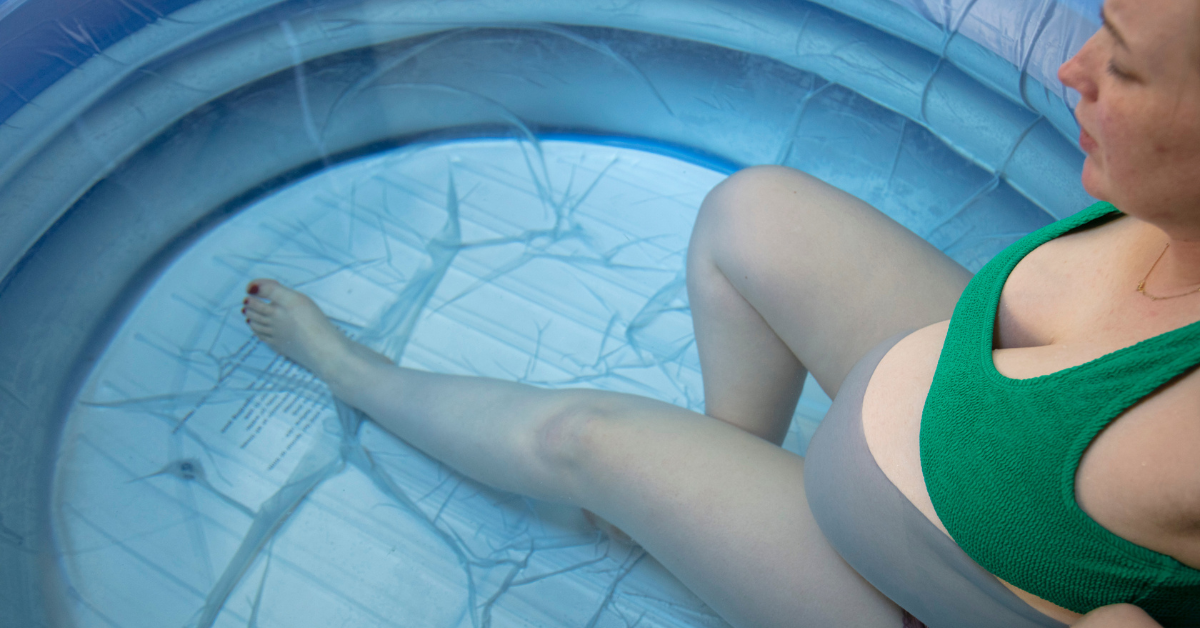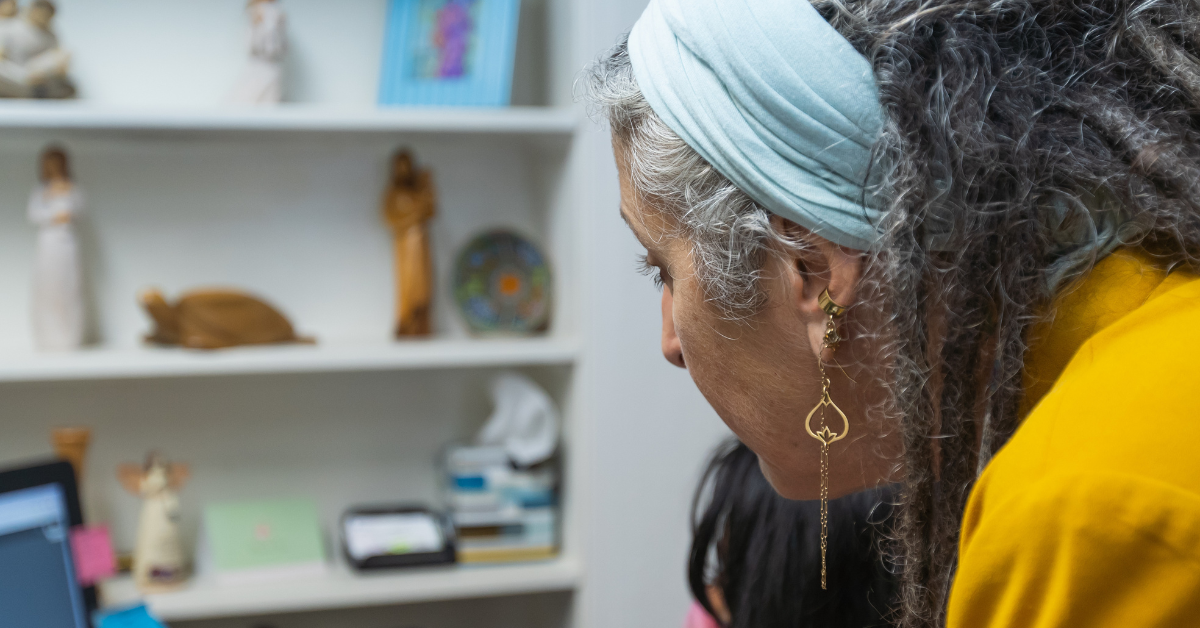Water birth is giving birth in a tub or pool of warm water. It has been used for centuries in different cultures and gained popularity in the 1970s when obstetrician Dr. Michel Odent introduced it as a gentle way for women to give birth.
In recent years, water birth has become more popular among expectant mothers as an alternative to traditional land births. It offers potential benefits such as natural pain relief and a peaceful birthing environment.
Many hospitals, birthing centers, and even homes now offer water birth options. If you’re interested in having a water birth and wondering, “Where can I find a water birth near me?” you can use the following methods to locate facilities or professionals that support this method in your local area:
- Research online: Look for local midwife practices, hospitals, and birthing centers with websites that mention water birth.
- Ask your healthcare provider: Consult with your doctor or midwife about water birth options.
- Join local parenting groups: Connect with other parents in your community through online forums or social media groups to get recommendations on water-birth-friendly locations.
This article will provide a detailed look into water birth, including its benefits, risks, safety guidelines, and the overall process from labor to delivery. We aim to equip you with the knowledge to decide whether this birthing method suits you.
The Benefits of Giving Birth in Water
Water birth offers many advantages for both the mother and the baby. It goes beyond creating a calming atmosphere and combines the gentle qualities of water with the intense childbirth experience.
Natural Pain Relief through Immersion in Water
Using warm water as a pain relief method has long been known to be effective. During labor, immersing in water can provide natural pain relief. The buoyancy of the water helps reduce pressure on the mother’s body, allowing her to move around more freely and find comfortable positions. This can lead to less painful labor without the need for drugs or medications.
Facilitation of Labor Progress with Oxytocin Release
The soothing effect of water during a water birth may trigger the release of oxytocin, also known as the “love hormone.” Oxytocin plays a vital role in labor by stimulating contractions and helping the labor progress smoothly.
Promoting Relaxation and Reducing Perineal Trauma
Warm water relaxes muscles and can help lower anxiety levels, creating a peaceful environment that supports the progress of labor. In addition, giving birth in water may reduce tension in the perineum (the area between the vagina and anus) and potentially decrease the chances of tearing or needing an episiotomy (a surgical cut to widen the vaginal opening).
Water births are not just about creating an idyllic birthing environment. They are about using natural elements to make the journey into motherhood easier and more empowering.

Understanding the Risks
Like any birthing method, water births have potential risks and complications. It’s important to know about them and be ready to handle any problems that arise
Meconium Aspiration Syndrome: A Concern for Newborns Born in Water
One risk of water births is Meconium Aspiration Syndrome (MAS). Meconium is the baby’s first poop, which sometimes comes out while they’re still inside the womb during labor. If this happens during a water birth, there’s a chance that the baby could breathe in (aspirate) some of this meconium-filled water, which can cause breathing issues. To lower this risk, healthcare providers keep an eye out for signs that the baby might be in distress or that there could be problems with the labor that might mean there’s meconium present.
Separating Myth from Reality: Drowning Risk During Water Births
One common misunderstanding about water births is the idea that the baby could drown. But babies have a ‘dive reflex‘ that stops them from breathing until they’re out of the water and exposed to air. So, as long as the baby is taken out of the water immediately after birth, this risk is very low.
Umbilical Cord Tears and Other Emergencies Requiring Immediate Attention
In rare cases, quick movements during a water birth can lead to a tear in the umbilical cord. This is an emergency that needs immediate medical help. To prevent things like this from happening, it’s really important to have trained healthcare professionals there who can quickly deal with any emergencies.
Understanding these risks helps you make an informed decision and ensures you’re prepared for any situation that may arise during your water birth journey.
Guidelines for a Safe Water Birth Experience
Ensuring safety during water birth is crucial. Following professional guidelines for water birth can make this birthing method safer and more effective.
ACOG's Guidelines for Eligibility and Candidate Selection in Water Births
The American College of Obstetricians and Gynecologists (ACOG) provides specific guidance for those considering water births. According to ACOG, water birth may be an option for those with uncomplicated pregnancies and who are at term (37-42 weeks). However, they recommend against water birth for those with certain conditions such as herpes lesions, excessive bleeding during labor, or if the baby is in a breech position.

Ensuring Optimal Hygiene and Infection Control Measures
Maintaining cleanliness is extremely important to prevent infection. The American College of Nurse-Midwives (ACNM) standards outline specific measures for ensuring optimal hygiene during a water birth. These include:
- Preparing the birthing pool with clean, warm water
- Regularly monitoring the temperature of the water
- Making sure the mother’s skin is clean before she gets into the pool
- Using single-use, sterile equipment whenever possible
The Water Birth Process: From Labor to Delivery
Understanding the water birth process and its potential impact on the duration of labor can empower you in your birthing journey. Here’s a glimpse into this transformative experience.
1. Preparation
The preparation for a water birth begins long before labor starts. You or your birthing partner will fill the birthing pool with warm water, maintaining a comfortable and safe temperature for both you and the baby.
2. Labor in Water
Once labor begins and contractions are regular, you can enter the water. The buoyancy often helps manage pain, encourages relaxation, and may accelerate labor progression.
3. Pushing and Birth
When it’s time to push, you’ll be guided by your body’s natural cues and the guidance of your healthcare provider. Your baby will be gently brought to the surface as soon as they’re born.
4. After Delivery
After delivery, you’ll have the chance to bond with your newborn skin-to-skin while still in the water, enhancing those first precious moments of connection.
Studies suggest that water birth can reduce labor duration. Warm water helps relax muscles, potentially speeding up labor. However, each woman’s experience differs based on various factors, such as health conditions, the baby’s position, and previous childbirth experiences.
The next section will explore how water birth compares to other birthing options. This comparison can further illuminate water birth’s unique aspects and help determine whether it aligns with your personal preferences and circumstances.
Comparison to Other Birthing Options
Home Water Birth
When considering a home water birth, it’s valuable to understand how it stands apart from other choices. A water birth typically occurs in a warm, serene pool, offering comfort and privacy that aligns with the natural birthing ethos. Unlike conventional home births, which may occur on a bed or in another part of the home, water births add a unique element of buoyancy and warmth, potentially easing labor pains and promoting relaxation.
Hospital Birth
Hospital births, by contrast, generally provide access to a broader range of medical interventions. For some mothers, the proximity to emergency care and options for pain relief, such as epidurals, are reassuring. In these settings, medication is readily available to manage discomfort during labor. However, this medicalized approach can sometimes feel impersonal or intrusive for those desiring a more natural experience.
Individual Factors Matter
Every woman’s body and preferences differ; there is no one-size-fits-all method for bringing new life into the world. The choice between a home water birth, hospital delivery, or another method should be influenced by individual health considerations, personal comfort levels with various interventions, and the environment where one feels most supported.
Remember that a well-informed decision comes from understanding all available options. Whether drawn to the tranquility of water or the reassurance of medical technology, respect for personal choice remains paramount in crafting your birth story.
Personal Stories: Real-Life Experiences with Water Birth
In the world of personal water birth stories, there are countless experiences, each as special as the mothers and children involved. These stories give us a glimpse into the deeply personal nature of water birth.
Linda's Story
“As I got into the warm water, I felt like I was floating. The pain was still there, but it wasn’t as intense. My husband stayed by my side, supporting me through every contraction. When our son was born, he looked so peaceful just floating in the water before we lifted him out. It was an incredible moment.”
Sarah's Story
Sarah shares her experience with a different perspective:
“My labor was going slow and I was so tired. The warm water helped me relax, but when my daughter’s heart rate suddenly dropped, we had to act quickly. Thankfully, my midwife knew what to do in emergencies. We had to leave the water and she was born healthy. It wasn’t what I had planned, but in the end, her safety was all that mattered.”
These stories show us that water birth can be different for everyone. Some women find it empowering and calming, while others may encounter unexpected difficulties.
Key Takeaway: Every birth is one-of-a-kind. While these stories give us valuable insights into real-life experiences with water birth, they are personal accounts that reflect individual situations. Therefore, it’s important to approach them with an open mind when making decisions about your own birthing experience.
Choosing a Qualified Healthcare Provider for Your Water Birth Journey
Having a qualified healthcare provider by your side can make all the difference during the beautiful journey of childbirth. When it comes to water births, it’s important to find a certified nurse midwife experienced in this area.
Introducing Midwife360
Midwife360 is an organization dedicated to ensuring safe and empowering home water births. Its team of certified nurse midwives has a wealth of knowledge and understanding of water births, making it an excellent choice for your healthcare needs during this time. They are skilled in all aspects of home water births and provide support from start to finish.
What Midwife360 Offers
Here are some of the services provided by Midwife360:
- Comprehensive prenatal care and education
- Maintaining cleanliness and preventing infections during water birth
- Helping with the progress of labor and managing pain
- Support after childbirth and care for the newborn
The Importance of Choosing Wisely
It’s not just their qualifications or experience when selecting a healthcare provider. It’s also crucial to find someone who:
- Respects your choices
- Understands your fears
- Shares in your joy
With Midwife360, you can expect more than just medical professionals. You will have partners fully dedicated to being there for you throughout this journey.
Prioritizing the Well-being of Both Mother and Baby
Whether you decide on a home water birth or a birthing center, it’s essential to choose a qualified healthcare provider who specializes in water births. This ensures that both you and your baby receive the best possible care.
As you begin this incredible path toward becoming parents, always prioritize the health and happiness of yourself and your little one.
As you consider the information shared about water birth, it’s important to talk to healthcare providers who can help you make an informed decision about water birth. This decision should match what you want while also ensuring that both you and your baby stay healthy.
Becoming a parent involves making many decisions and going through different experiences. Whether you want a water birth or prefer another way of giving birth, remember that every journey is special and has its beauty. Believe in your body’s strength, trust your choices, and lean on the people who support you as you enter this life-changing time.
Getting thorough care and expertise is crucial, so look at all your options and decide confidently. Your birthing experience gives you power and happiness, just like the amazing life about to begin.





